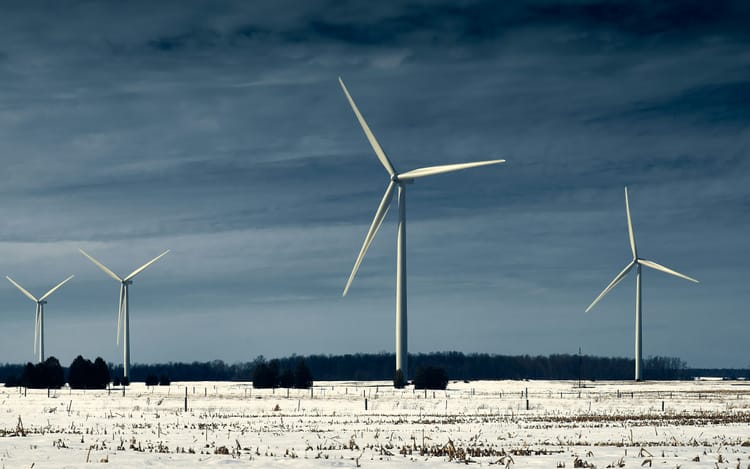Sustainable finance under scrutiny amid Barclays controversy

Sustainable finance activities are again under scrutiny after a Barclays investor said the bank helped raise US$41 billion in sustainability-linked finance for fossil fuel companies in 2023.
A report by The Bureau of Investigative Journalism (TBIJ) released this week highlights “deeply problematic” sustainable finance practices by banks, with evidence that Barclays provided part of its US$1 trillion sustainable finance target to fossil fuel companies.
TBIJ refers to several specific transactions, including US$3 billion worth of sustainability-linked loans and bonds Barclays helped arrange for Canadian pipeline company Enbridge. The company is expanding oil and gas infrastructure across North America, including a controversial pipeline cutting through Indigenous land to transport tar sands oil.
Flexibility of sustainable finance guidelines
In response, Barclays has said the labelling of these transactions as sustainability-linked is consistent with guidance from the Loan Market Association, Loan Syndications and Trading Association, Asia Pacific Loan Market Association and International Capital Markets Association.
But this guidance has been shown to be extremely flexible: the sustainability-linked loan (SLL) principles, for example, state that the sustainability KPIs used to offer preferential terms must be “ambitious and meaningful to the borrower’s business”, but that they are ultimately a decision between lender and borrower. The document also says “the use of proceeds in relation to a SLL is not a determinant in its categorisation”, meaning companies are allowed to use these loans for purposes other than their sustainability transition.
Read also: Sustainability-linked loans are not (yet) where they need to be
The pressure to clarify sustainable finance definitions is building: earlier this month, HSBC shareholders also asked the bank to disclose how exactly it plans to use the US$1 trillion it has dedicated to sustainable finance by 2030. Other banks including Citi and JP Morgan have also been pressured to disclose the ratio of clean energy to fossil fuel financing they provide in order to come up with more specific targets.
Enbridge: top receiver of fossil fuel finance in 2023
Barclays was able to classify the Enbridge financing as sustainable because of the company’s net zero operational emissions target.
Enbridge said this week it has already met its 2030 carbon intensity target, having cut Scope 1 and 2 GHG emissions intensity by 37% since 2018. Absolute Scope 1 emissions went from 7.7 million tonnes to 7.5 million tonnes last year, mostly thanks to methane emissions reduction measures such as recompression.
But Jeanne Martin, Head of the Banking Programme at ShareAction, warned in the TBIJ report that “the real source of emissions from a company like Enbridge will be from the oil and gas its pipelines help transport”, which is not included in its target.
“If the conditions that a bank sets to provide financing to oil and gas transport companies don’t tackle oil and gas, the bank will be accused of greenwashing,” Martin added.
Incidentally, the Canadian firm is listed as the top receiver of fossil fuel finance by banks in 2023 in the latest Banking on Climate Chaos report, also published this week. Enbridge got US$35 billion of new bank finance commitments last year, which supported the acquisition of three gas utilities, making it the largest North American gas provider.
The report, prepared annually by a number of NGOs including BankTrack, the Sierra Club and Reclaim Finance, reveals that Barclays is one of 27 banks that increased their fossil finance commitments in 2023, with a strong focus on natural gas or LNG as well as its transport. Barclays provided US$24.2 billion of financing to the fossil fuel industry last year, compared to US$21.6 billion in 2022.
In early 2024, the bank unveiled a new climate transition plan that prohibits it from providing project finance or any other direct financing for oil and gas expansion projects or related infrastructure projects.
Investors concerned about greenwashing
According to TBIJ, Barclays also helped raise a US$2.8 billion sustainability-linked loan for Harbour Energy, the UK’s largest oil and gas producer, and US $5.4 billion of sustainable finance for oil trader Trafigura.
Andrew Harper, Chief Responsibility Officer at investment manager Epworth, which invests in Barclays, said: “We’re concerned because the bank is making such a substantial claim and the public thinks the climate emergency is being worked towards being solved. Meanwhile, the problem is getting worse and worse. We think it’s totally dishonest. If they are calling the financing of any fossil fuel companies sustainable finance, that to me is greenwash.”
Other Barclays investors interviewed by TBIJ confirmed this sentiment, with AkademikerPension calling sustainability-linked finance for oil and gas companies “in most cases deeply problematic” and adding that the firm doesn’t count sustainability-linked bonds and loans as green investments in its own accounting due to their lack of scrutiny. “The penalties are low and the targets often insufficient,” Chief Investment Officer Anders Schelde said.
Barclays has said it “respectfully disagrees” with these stakeholders, adding: “We believe in financing the real economy, helping our clients to reduce their emissions and the emissions we finance.







Member discussion